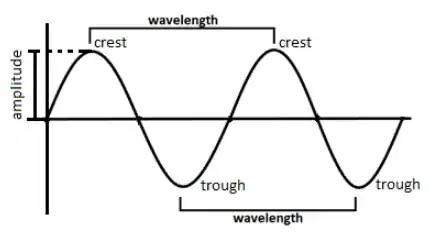Okay. Simply speaking, waves are energy disturbances.
Imagine a flat flexible plane, like a stretched out cloth. Now, you prod the cloth, thus transfering energy to it. This can be seen in the form of a wave that goes across the clothing. If you continually prod the cloth, you see a collection of waves. Basically what you are seeing there are disturbances in the flat plane.
Now, just so you understand better, waves have a few defining properties like frequence, amplitude and wavelength. These may seem complicated but really, they are very easy to relate to.
-> Frequency can be said as the number of waves per unit time. Or how frequent waves are being produced.
-> Amplitude is the height of an individual wave.
-> Wavelength is the distance between a single crest and a trough.
A crest and a trough are the parts of a wave.

Waves can be of two types, mechanical and electromagnetic. Mechanical waves require medium to traverse like sound in air, while electromagnetic waves do not need medium, like radio waves in space.
Also you're right, waves do cause disturbances of particles around them. To imagine this, think of a dusty pillow. When you hit it, you create a wave across is, thus dispersing the dust.
